برتر فایل
یک سایت مرجع با هدف انتشار آموزشهای کاربردی از نرم افزارهای مهندسی (CAD CAE CAP CAM)، تحقیق، پروژه، جزوه، کتاب و... است که به منظور دسترسی راحتتر، سریعتر و ارزانتر شما دانشجویان و پژوهشگران به تحقیقات مد نظرتان تاسیس شده است.برتر فایل
یک سایت مرجع با هدف انتشار آموزشهای کاربردی از نرم افزارهای مهندسی (CAD CAE CAP CAM)، تحقیق، پروژه، جزوه، کتاب و... است که به منظور دسترسی راحتتر، سریعتر و ارزانتر شما دانشجویان و پژوهشگران به تحقیقات مد نظرتان تاسیس شده است.مقدمه ای بر تحلیل اجزاء محدود با استفاده از نرم افزارهای متلب و آباکوس
کتاب مقدمه ای بر تحلیل اجزاء محدود با استفاده از نرم افزارهای MATLAB & ABAQUS، یکی از کتاب های مفید و کاربردی در زمینه تحلیل اجزاء محدود با استفاده از دو نرم افزار معروف متلب و آباکوس می باشد. این کتاب مشتمل بر 11 فصل، 485 صفحه، به زبان انگلیسی روان، تایپ شده، به همراه تصاویر، روابط مهم ریاضی و فرمول های مهم اجزاء محدود، با فرمت PDF، به ترتیب زیر گردآوری شده است:
Chapter 1: Introduction
- Prologue
- Finite Element Analysis and the User
- Aim of the Book
- Book Organization
Chapter 2: Bar Element
- Introduction
- One-Dimensional Truss Element
- Global Stiffness Matrix Assembly
- Boundary Conditions
- Solution of the System of Equations
- Support Reactions
- Members’ Forces
- Computer Code: truss.m
- Problems
- Analysis of a Simple Truss with Abaqus
Chapter 3: Beam Element
- Introduction
- Stiffness Matrix
- Uniformly Distributed Loading
- Internal Hinge
- Computer Code: beam.m
- Problems
- Analysis of a Simple Beam with Abaqus
Chapter 4: Rigid Jointed Frames
- Introduction
- Stiffness Matrix of a Beam–Column Element
- Stiffness Matrix of a Beam–Column Element in the Presence of Hinged End
- Global and Local Coordinate Systems
- Global Stiffness Matrix Assembly and Solution for Unknown Displacements
- Computer Code: frame.m
- Analysis of a Simple Frame with Abaqus
Chapter 5: Stress and Strain Analysis
- Introduction
- Stress Tensor
- Deformation and Strain
- Stress–Strain Constitutive Relations
- Solved Problems
Chapter 6: Weighted Residual Methods
- Introduction
- General Formulation
- Galerkin Method
- Weak Form
- Integrating by Part over Two and Three Dimensions (Green Theorem)
- Rayleigh Ritz Method
Chapter 7: Finite Element Approximation
- Introduction
- General and Nodal Approximations
- Finite Element Approximation
- Basic Principles for the Construction of Trial Functions
- Two-Dimensional Finite Element Approximation
- Shape Functions of Some Classical Elements for C0 Problems
Chapter 8: Numerical Integration
- Introduction
- Gauss Quadrature
- Integration over a Reference Element
- Integration over a Triangular Element
- Solved Problems
Chapter 9: Plane Problems
- Introduction
- Finite Element Formulation for Plane Problems
- Spatial Discretization
- Constant Strain Triangle
- Linear Strain Triangle
- The Bilinear Quadrilateral
- The 8-Node Quadrilateral
- Solved Problem with MATLAB
Chapter 10: Axisymmetric Problems
- Definition
- Strain–Displacement Relationship
- Stress–Strain Relations
- Finite Element Formulation
- Programming
- Analysis with Abaqus Using the 8-Node Quadrilateral
Chapter 11: Thin and Thick Plates
- Introduction
- Thin Plates
- Thick Plate Theory or Mindlin Plate Theory
- Linear Elastic Finite Element Analysis of Plates
- Boundary Conditions
- Computer Program for Thick Plates Using the 8-Node Quadrilateral
- Analysis with Abaqus
کدهای متلب برای آنالیز اجزاء محدود
شبیه سازی ارتعاشات با استفاده از نرم افزارهای متلب و انسیس
حل معادلات دیفرانسیل با مشتقات جزئی (PDE) با نرم افزار متلب
کاربرد متلب در سیگنال ها، سیستم ها و کنترل
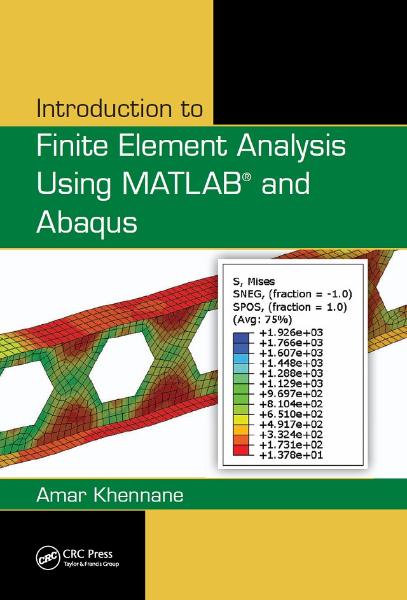
جهت دانلود بر لینک زیر کلیک نمایید:
مقدمه ای بر تحلیل اجزاء محدود با استفاده از نرم افزارهای متلب و آباکوس
اگر به فراگیری مباحث مشابه مطلب بالا علاقهمند هستید، آموزشهایی که در ادامه آمدهاند نیز به شما پیشنهاد میشوند:
سیمولینک، شبیه سازی سیستم دینامیکی برای متلب
برنامه نویسی متلب برای مهندسین
معرفی عملی برنامه نویسی و حل مسئله با متلب
متلب برای مهندسین عمران
تجزیه و تحلیل عددی با استفاده از متلب
برنامه نویسی به روش المان محدود در نرم افزار متلب
دستورالعمل های متلب برای علم زمین شناسی
حل کردن مشکلات با استفاده از نرم افزار متلب
This book is for people who need to solve ordinary differential equations (ODEs), both initial value problems (IVPs) and boundary value problems (BVPs) as well as delay differential equations (DDEs). These topics are usually taught in separate courses of length one semester each, but Solving ODEs with MATLAB provides a sound treatment of all three in about 250 pages. The chapters on each of these topics begin with a discussion of “the facts of life” for the problem, mainly by means of examples. Numerical methods for the problem are then developed
– but only the methods most widely used. Although the treatment of each method is brief and technical issues are minimized, the issues important in practice and for understanding the codes are discussed. Often solving a real problem is much more than just learning how to call a code. The last part of each chapter is a tutorial that shows how to solve problems by means of small but realistic examples
کتاب حل کردن مشکلات با استفاده از نرم افزار متلب (Solving ODEs with MATLAB)، مشتمل بر 4 فصل، 265 صفحه، با فرمت pdf، همراه با تصاویر، به زبان انگلیسی، به ترتیب زیر گردآوری شده است:
- Introduction
- Existence, Uniqueness, and Well Posedness
- Standard Form
- Control of the Error
- Qualitative Properties
Chapter 2: Initial Value Problems
- Introduction
- Numerical Methods for IVPs
- One-Step Methods
- Methods with Memory
- Solving IVPs in Matlab
- Event Location
- ODEs Involving a Mass Matrix
- Large Systems and the Method of Lines
- Singularities
Chapter 3: Boundary Value Problems
- Introduction
- Boundary Value Problems
- Boundary Conditions
- Boundary Conditions at Singular Points
- Boundary Conditions at Infinity
- Numerical Methods for BVPs
- Solving BVPs in Matlab
Chapter 4: Delay Differential Equations
- Introduction
- Delay Differential Equations
- Numerical Methods for DDEs
- Solving DDEs in Matlab
- Other Kinds of DDEs and Software
- Bibliography
- Index
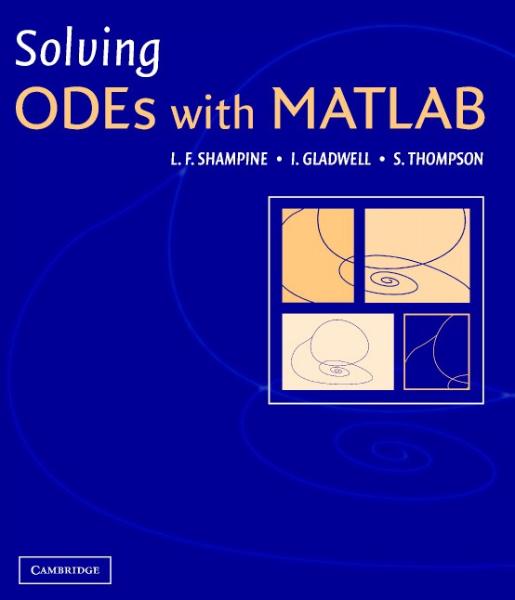
جهت دانلود کتاب حل کردن مشکلات با استفاده از نرم افزار متلب (Solving ODEs with MATLAB) برلینک زیر کلیک نمایید.
حل کردن مشکلات با استفاده از نرم افزار متلب
آموزش فشرده سازی تصاویر و ویدئو با استفاده از نرم افزار متلب
کتاب آموزش فشرده سازی تصاویر و ویدئو با استفاده از نرم افزار متلب (Still Image & Video Compression with MATLAB)، مشتمل بر 10 فصل، 443 صفحه، با فرمت pdf، همراه با تصاویر، به زبان انگلیسی، به ترتیب زیر گردآوری شده است:
- What is Source Coding
- Why is Compression Necessary
- Image and Video Compression Techniques
- Video Compression Standards
- Organization of the Book
- Summary
- References
- Introduction
- Sampling a Continuous Image
- Image Quantization
- Color Image Representation
- Summary
- References
- Problems
- Introduction
- Unitary Transforms
- Karhunen–Lo`eve Transform
- Properties of Unitary Transforms
- Summary
- References
- Problems
Chapter 4: Discrete Wavelet Transform
- Introduction
- Continuous Wavelet Transform
- Wavelet Series
- Discrete Wavelet Transform
- Efficient Implementation of 1D DWT
- Scaling and Wavelet Filters
- Two-Dimensional DWT
- Energy Compaction Property
- Integer or Reversible Wavelet
- Summary
- References
- Problems
- Introduction
- Information Theory
- Huffman Coding
- Arithmetic Coding
- Golomb–Rice Coding
- Run–Length Coding
- Summary
- References
- Problems
- Introduction
- Design of a DPCM
- Adaptive DPCM
- Summary
- References
- Problems
Chapter 7: Image Compression in the Transform Domain
- Introduction
- Basic Idea Behind Transform Coding
- Coding Gain of a Transform Coder
- JPEG Compression
- Compression of Color Images
- Blocking Artifact
- Variable Block Size DCT Coding
- Summary
- References
- Problems
Chapter 8: Image Compression in the Wavelet Domain
- Introduction
- Design of a DWT Coder
- Zero-Tree Coding
- JPEG2000
- Digital Cinema
- Summary
- References
- Problems
Chapter 9: Basics of Video Compression
- Introduction
- Video Coding
- Stereo Image Compression
- Summary
- References
- Problems
Chapter 10: Video Compression Standards
- Introduction
- MPEG-1 and MPEG-2 Standards
- MPEG-4
- H.264
- Summary
- References
- Problems
- Index
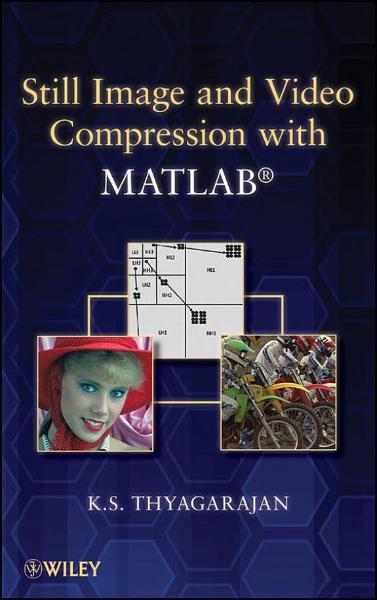
جهت دانلود کتاب آموزش فشرده سازی تصاویر و ویدئو با استفاده از نرم افزار متلب (Still Image & Video Compression with MATLAB)، برلینک زیر کلیک نمایید.
آموزش فشرده سازی تصاویر و ویدئو با استفاده از نرم افزار متلب
جبر خطی پیشرفته برای مهندسین با استفاده از نرم افزار متلب
جبر خطّی شاخهای از ریاضیات است که به بررسی و مطالعه ماتریس ها، بردارها، فضاهای برداری (فضاهای خطّی)، تبدیلات خطی، و دستگاههای معادلات خطی میپردازد. جبر خطّی کاربردهای فراوان و گوناگونی در ریاضیات و محاسبات گسسته دارد. علاوه بر کاربردهای آن در زمینههایی از خود ریاضیات همانند جبر مجرد، آنالیز تابعی، هندسه تحلیلی، و آنالیز عددی، جبر خطّی استفادههای وسیعی نیز در فیزیک، مهندسی، علوم طبیعی، و علوم اجتماعی پیداکرده است. این درس شامل موضوعاتی است که در یک درس جبر خطی دانشگاهی بررسی می شود که شامل فضاهای برداری، تبدیلات خطی، مقدار یکه و بردار یکه، دستگاه معادلات خطی می باشد...
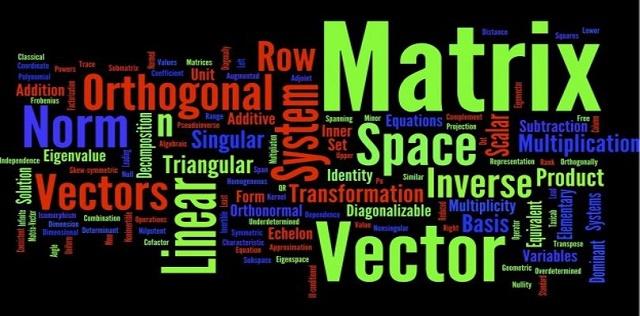
کتاب جبر خطی پیشرفته برای مهندسین با استفاده از نرم افزار متلب (Advanced Linear Algebra for Engineers with MATLAB)، مشتمل بر 6 فصل، 367 صفحه، با فرمت pdf، همراه با تصاویر، به زبان انگلیسی، به ترتیب زیر گردآوری شده است:
Chapter 1: Matrices, Matrix Algebra, and Elementary, Matrix Operations
- Introduction
- Basic Concepts and Notation
- Matrix Algebra
- Elementary Row Operations
- Solution of System of Linear Equations
- Matrix Partitions
- Block Multiplication
- Inner, Outer, and Kronecker Products
Chapter 2: Determinants, Matrix Inversion and Solutions to Systems of Linear Equations
- Introduction
- Determinant of a Matrix
- Matrix Inversion
- Solution of Simultaneous Linear Equations
- Applications: Circuit Analysis
- Homogeneous Coordinates System
- Rank, Null Space and Invertibility of Matrices
- Special Matrices with Applications
- Derivatives and Gradients
Chapter 3: Linear Vector Spaces
- Introduction
- Linear Vector Space
- Span of a Set of Vectors
- Normed Vector Spaces
- Inner Product Spaces
- Orthogonality
- Matrix Factorization
Chapter 4: Eigenvalues and Eigenvectors
- Introduction
- Matrices as Linear Transformations
- Eigenvalues and Eigenvectors
- Matrix Diagonalization
- Special Matrices
- Singular Value Decomposition
- Numerical Computation of Eigenvalues and Eigenvectors
- Properties of Eigenvalues and Eigenvectors of Different Classes of Matrices
- Applications
Chapter 5: Matrix Polynomials and Functions of Square Matrices
- Introduction
- Matrix Polynomials
- Cayley–Hamilton Theorem
- Functions of Matrices
- The State Space Modeling of Linear Continuous-time Systems
- State Space Representation of Discrete-time Systems
- Controllability of LTI Systems
- Observability of LTI Systems
Chapter 6: Introduction to Optimization
- Introduction
- Stationary Points of Functions of Several Variables
- Least-Square (LS) Technique
- Total Least-Squares
- Eigen Filters
- Stationary Points with Equality Constraints
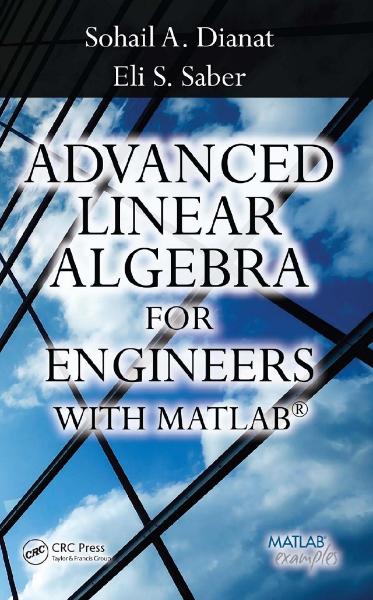
جهت دانلود کتاب جبر خطی پیشرفته برای مهندسین با استفاده از نرم افزار متلب (Advanced Linear Algebra for Engineers with MATLAB)، برلینک زیر کلیک نمایید.
جبر خطی پیشرفته برای مهندسین با استفاده از نرم افزار متلب
مدلسازی و تحلیل سیستم های دینامیکی
کتاب مدلسازی و تحلیل سیستم های دینامیکی (Modeling and Analysis of Dynamic Systems)، مشتمل بر 10 فصل، 558 صفحه، به زبان انگلیسی، همراه با تصاویر، فرمول ها و جداول مهم، با فرمت pdf، به ترتیب زیر گردآوری شده است:
Chapter 1: Introduction to MATLAB, Simulink, and Simscape
- MATLAB Command Window and Command Prompt
- User Defined Functions and Script Files
- Creating a Script File
- Defining and Evaluating Functions
- Iterative Calculations
- Matrices and Vectors
- Differentiation and Integration
- Plotting in MATLAB
- Plotting Data Points
- Plotting Analytical Expressions
- Simulink
- Block Library
- Building a New Model
- Simulation
- Simscape
- Block Library
- Building a New Model and Simulation
- Simulation
Chapter 2: Complex Analysis, Differential Equations, and Laplace Transformation
- Complex Analysis
- Complex Numbers in Rectangular Form
- Magnitude
- Complex Conjugate
- Complex Numbers in Polar Form
- Complex Algebra Using the Polar Form
- Integer Powers of Complex Numbers
- Roots of Complex Numbers
- Complex Variables and Functions
- Differential Equations
- Linear, First-Order Differential Equations
- Second-Order Differential Equations with Constant Coefficients
- Homogeneous Solution
- Particular Solution
- Laplace Transformation
- Linearity of Laplace and Inverse Laplace Transforms
- Differentiation and Integration of Laplace Transforms
- Differentiation of Laplace Transforms
- Integration of Laplace Transforms
- Special Functions
- Unit-Step Function
- Unit-Ramp Function
- Unit-Pulse Function
- Unit-Impulse (Dirac Delta) Function
- The Relation between Unit-Impulse and Unit-Step
- Functions
- Periodic Functions
- Laplace Transforms of Derivatives and Integrals
- Laplace Transforms of Derivatives
- Laplace Transforms of Integrals
- Inverse Laplace Transformation
- Partial-Fraction Expansion Method
- Performing Partial Fractions in MATLAB
- Convolution Method
- Final-Value Theorem and Initial-Value Theorem
- Final-Value Theorem
- Initial-Value Theorem
- Summary
- Vectors and Matrices
- Special Matrices
- Elementary Row Operations
- Rank of a Matrix
- Determinant of a Matrix
- Properties of Determinant
- Rank in Terms of Determinant
- Block Diagonal and Block Triangular Matrices
- Inverse of a Matrix
- Adjoint Matrix
- Solution of Linear Systems of Equations
- Gauss Elimination Method
- Using the Inverse of the Coefficient Matrix
- Cramer’s Rule
- Homogeneous Systems
- Matrix Eigenvalue Problem
- Solving the Eigenvalue Problem
- Algebraic Multiplicity and Geometric Multiplicity
- Generalized Eigenvectors
- Similarity Transformations
- Matrix Diagonalization
- Defective Matrices
- Summary
Chapter 4: System Model Representation
- Configuration Form
- Second-Order Matrix Form
- State-Space Form
- State Variables, State-Variable Equations, State Equation
- State-Variable Equations
- State Equation
- Output Equation, State-Space Form
- Output Equation
- State-Space Form
- Decoupling the State Equation
- Input–Output Equation, Transfer Function
- Input–Output Equations from the System Model
- Transfer Functions from the System Model
- Relations between State-Space Form, Input–Output Equation and Transfer Matrix
- Input–Output Equation to State-Space Form
- Controller Canonical Form
- State-Space Form to Transfer Matrix
- Block Diagram Representation
- Block Diagram Operations
- Summing Junction
- Series Combinations of Blocks
- Parallel Combinations of Blocks
- Integration
- Closed-Loop Systems
- Block Diagram Reduction Techniques
- Moving a Branch Point
- Moving a Summing Junction
- Mason’s Rule
- Block Diagram Construction from System Model
- Linearization
- Linearization of a Nonlinear Element
- Functions of Two Variables
- Linearization of a Nonlinear Model
- Operating Point
- Linearization Procedure
- Small-Angle Linearization
- Linearization with MATLAB Simulink
- Summary
- Mechanical Elements
- Mass Elements
- Spring Elements
- Damper Elements
- Equivalence
- Translational Systems
- Degrees of Freedom
- Newton’s Second Law
- Free-Body Diagrams
- Static Equilibrium Position and Coordinate Reference
- Massless Junctions
- D’Alembert’s Principle
- Rotational Systems
- General Moment Equation
- Modeling of Rigid Bodies in Plane Motion
- Mass Moment of Inertia
- Pure Rolling Motion
- Mixed Systems: Translational and Rotational
- Force and Moment Equations
- Energy Method
- Gear–Train Systems
- System Modeling with Simulink and Simscape
- Translational Systems
- Rotational Systems
- Summary
Chapter 6: Electrical, Electronic, and Electromechanical Systems
- Electrical Elements
- Resistors
- Inductors
- Capacitors
- Electric Circuits
- Kirchhoff’s Voltage Law
- Kirchhoff’s Current Law
- Node Method
- Loop Method
- State Variables of Circuits
- Operational Amplifiers
- Electromechanical Systems
- Elemental Relations of Electromechanical Systems
- Armature-Controlled Motors
- Field-Controlled Motors
- Impedance Methods
- Impedances of Electric Elements
- Series and Parallel Impedances
- Mechanical Impedances
- System Modeling with Simulink and Simscape
- Electric Circuits
- Operational Amplifiers
- DC Motors
- Summary
Chapter 7: Fluid and Thermal Systems
- Pneumatic Systems
- Ideal Gases
- Pneumatic Capacitance
- Modeling of Pneumatic Systems
- Liquid-Level Systems
- Hydraulic Capacitance
- Hydraulic Resistance
- Modeling of Liquid-Level Systems
- Thermal Systems
- First Law of Thermodynamics
- Thermal Capacitance
- Thermal Resistance
- Modeling of Heat Transfer Systems
- System Modeling with Simulink and Simscape
- Summary
- Types of Response
- Transient Response and Steady-State Response
- Transient Response of First-Order Systems
- Free Response of First-Order Systems
- Impulse Response of First-Order Systems
- Step Response of First-Order Systems
- Ramp Response of First-Order Systems
- Transient Response of Second-Order Systems
- Free Response of Second-Order Systems
- Initial Response in MATLAB
- Impulse Response of Second-Order Systems
- Impulse Response in MATLAB
- Step Response of Second-Order Systems
- Step Response in MATLAB
- Response Analysis Using MATLAB Simulink
- Frequency Response
- Frequency Response of Stable, Linear Systems
- Frequency Response of First-Order Systems
- Frequency Response of Second-Order Systems
- Bode Diagram
- Plotting Bode Diagrams in MATLAB
- Bode Diagram of First-Order Systems
- Bode Diagram of Second-Order Systems
- Solving the State Equation
- Formal Solution of the State Equation
- Matrix Exponential
- Formal Solution in MATLAB
- Solution of the State Equation via Laplace Transformation
- Solution of the State Equation via State-Transition Matrix
- Response of Nonlinear Systems
- Numerical Solution of the State-Variable Equations
- Fourth-Order Runge–Kutta Method
- Response via MATLAB Simulink
- Response of the Linearized Model
- Summary
Chapter 9: Introduction to Vibrations
- Free Vibration
- Logarithmic Decrement
- Coulomb Damping
- Forced Vibration
- Half-Power Bandwidth
- Rotating Unbalance
- Harmonic Base Excitation
- Vibration Suppressions
- Vibration Isolators
- Vibration Absorbers
- Modal Analysis
- Eigenvalue Problem
- Orthogonality of Modes
- Response to Initial Excitations
- Response to Harmonic Excitations
- Vibration Measurement and Analysis
- Vibration Measurement
- System Identification
- Summary
Chapter 10: Introduction to Feedback Control Systems
- Basic Concepts and Terminologies
- Stability and Performance
- Stability of Linear Time-Invariant Systems
- Time-Domain Performance Specifications
- Frequency-Domain Performance Specifications
- Benefits of Feedback Control
- Stabilization
- Disturbance Rejection
- Reference Tracking
- Sensitivity to Parameter Variations
- Proportional–Integral–Derivative Control
- Proportional Control
- Proportional–Integral Control
- PID Control
- Ziegler–Nichols Tuning of PID Controllers
- Root Locus
- Root Locus of a Basic Feedback System
- Analysis Using Root Locus
- Control Design Using Root Locus
- Bode Plot
- Bode Plot of a Basic Feedback System
- Analysis Using Bode Plot
- Control Design Using Bode Plot
- Full-State Feedback
- Analysis of State-Space Equations
- Control Design for Full-State Feedback
- Integration of Simulink and Simscape into Control Design
- Control System Simulation Using Simulink
- Integration of Simscape into Control System Simulation
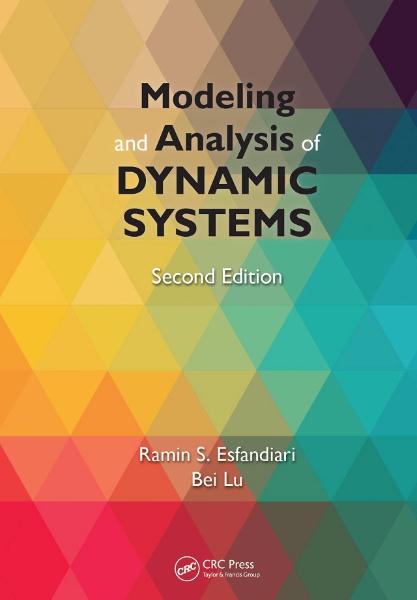
جهت دانلود کتاب مدلسازی و تحلیل سیستم های دینامیکی (Modeling and Analysis of Dynamic Systems)، برلینک زیر کلیک نمایید.